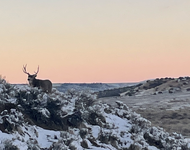Hello,
NOT ASKING FOR SPECIFIC GMU ADVICE
Looking at CO mule tag 3rd rifle season. Focusing in a burn area around 9kft. Hoping to gain more understanding how a burn area within the last few years could be impacted by rain or lack thereof as the summer progresses. I'm thinking trees may be fallen and hard to get around, making an attractive sanctuary for deer? I know their main forage at that point of the year is S facing grass if available and then sage. More rain means more intermittent grass within sanctuary while less rain concentrates food. Any other things I could be missing?

NOT ASKING FOR SPECIFIC GMU ADVICE
Looking at CO mule tag 3rd rifle season. Focusing in a burn area around 9kft. Hoping to gain more understanding how a burn area within the last few years could be impacted by rain or lack thereof as the summer progresses. I'm thinking trees may be fallen and hard to get around, making an attractive sanctuary for deer? I know their main forage at that point of the year is S facing grass if available and then sage. More rain means more intermittent grass within sanctuary while less rain concentrates food. Any other things I could be missing?

